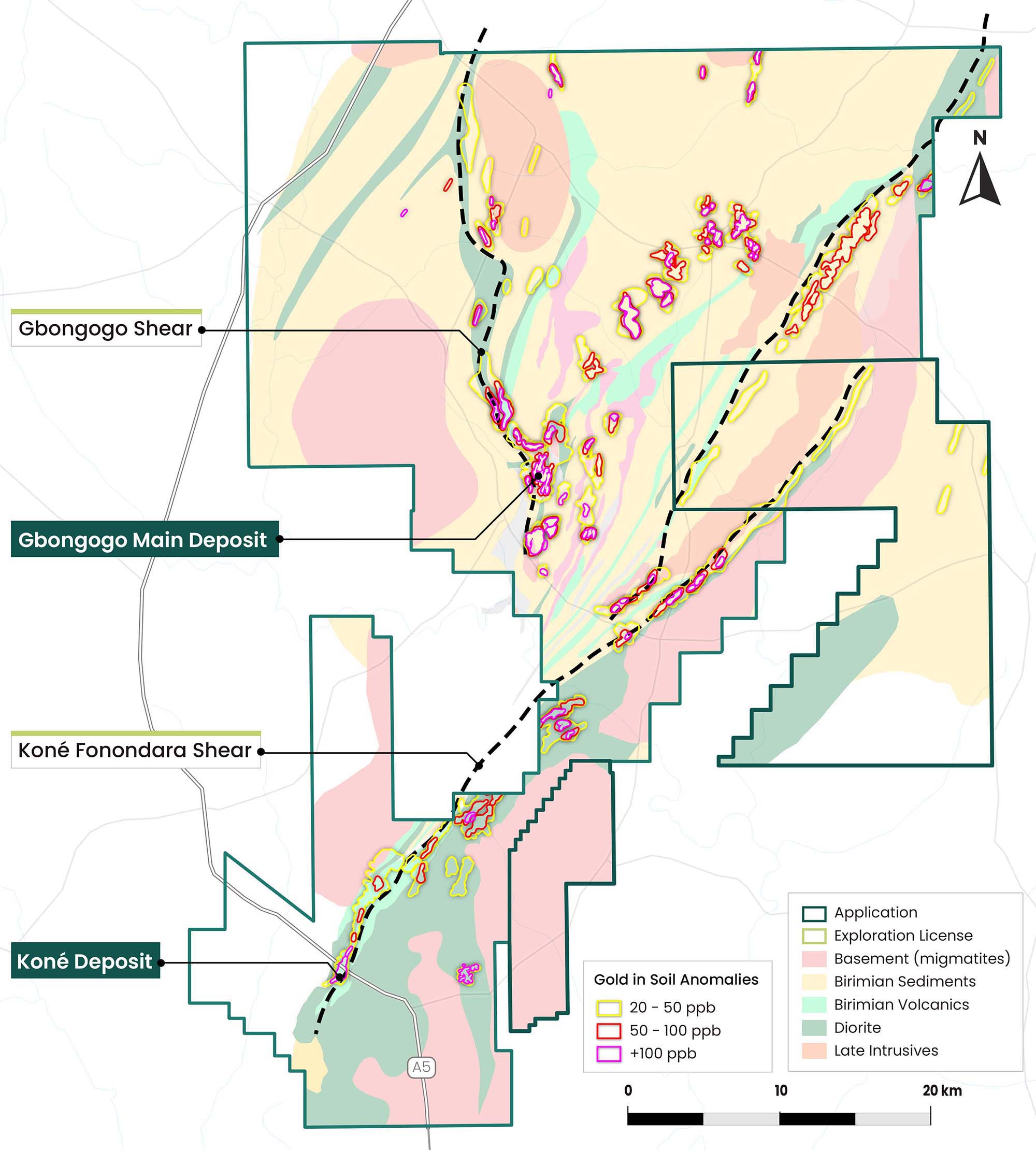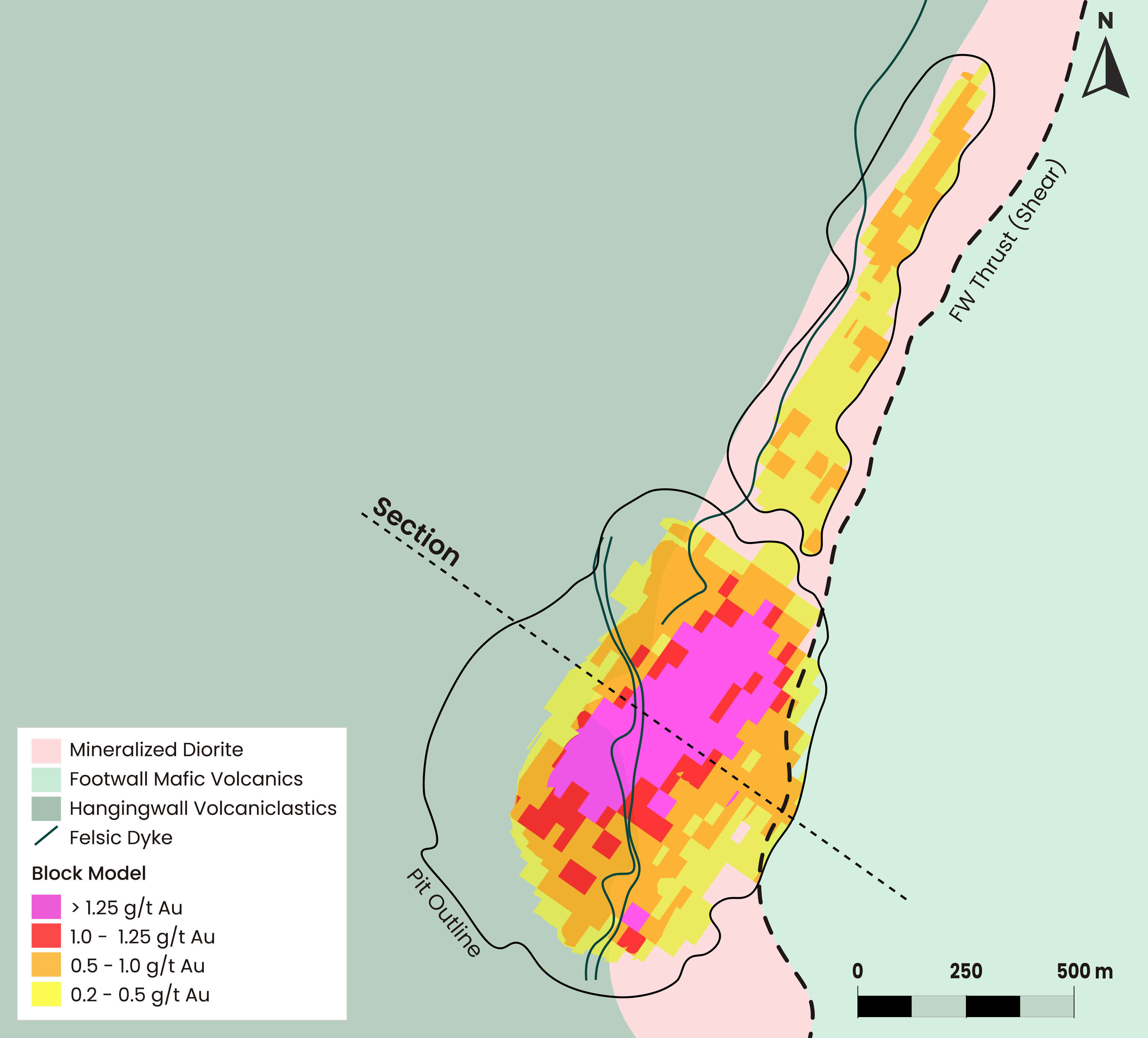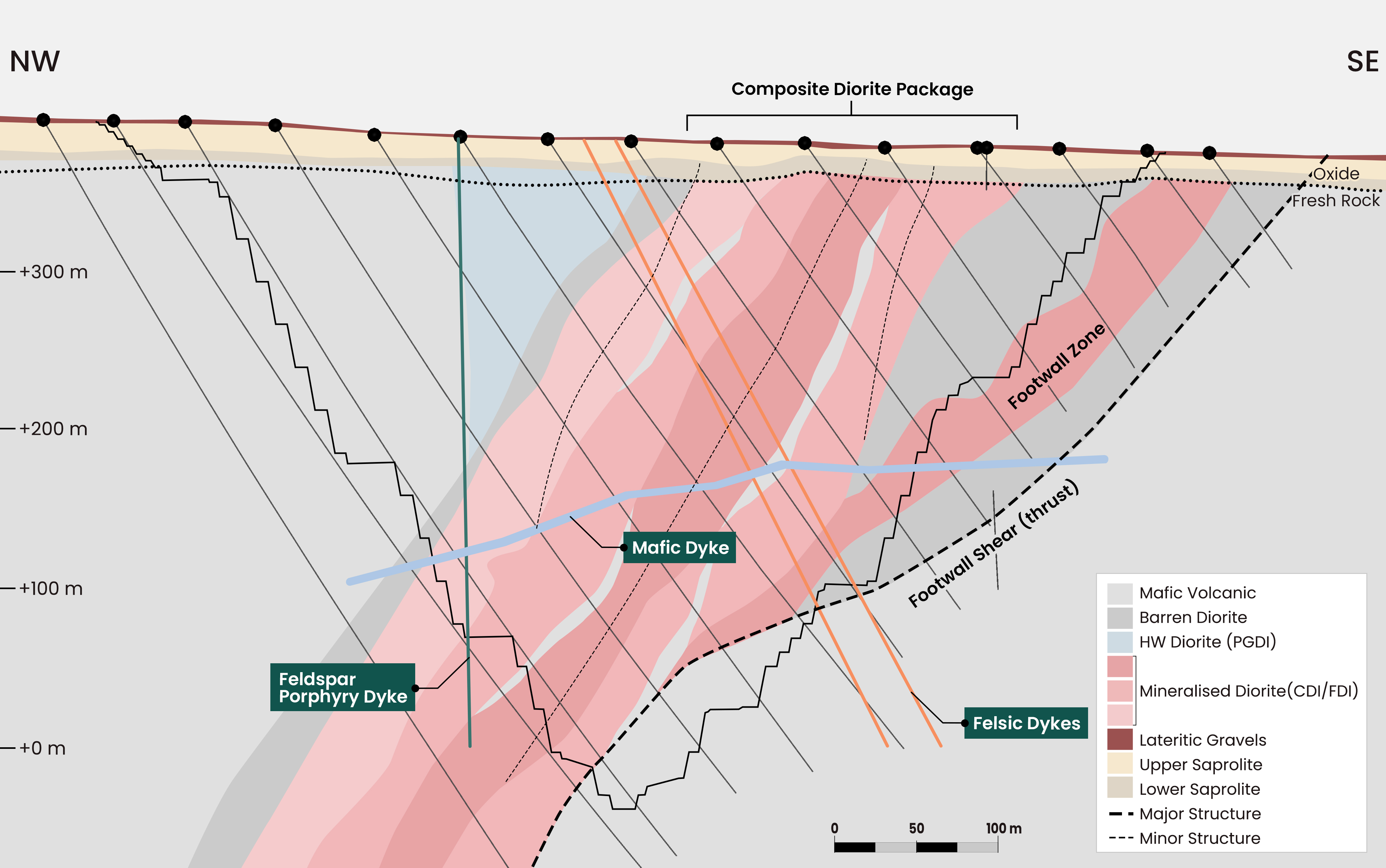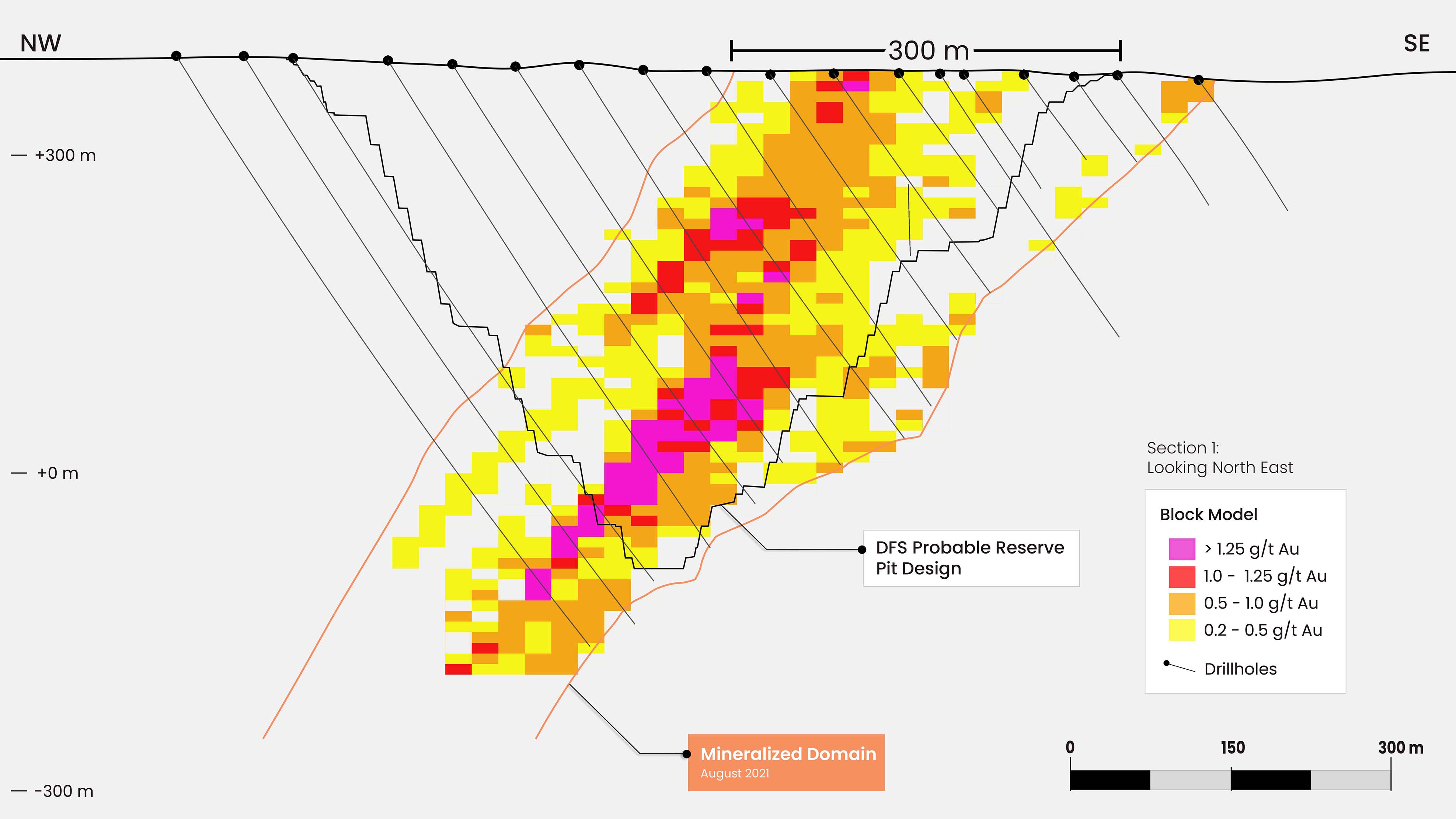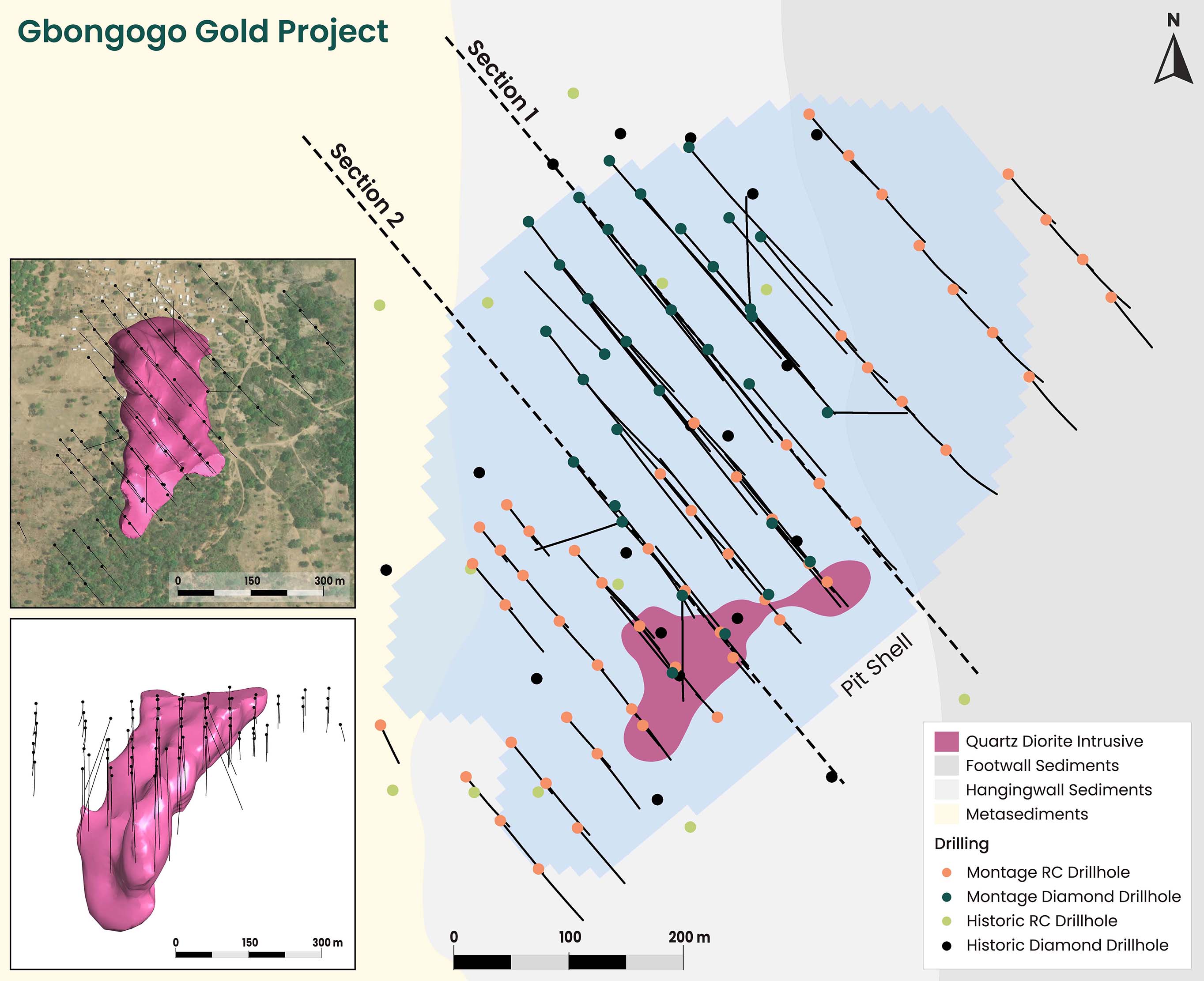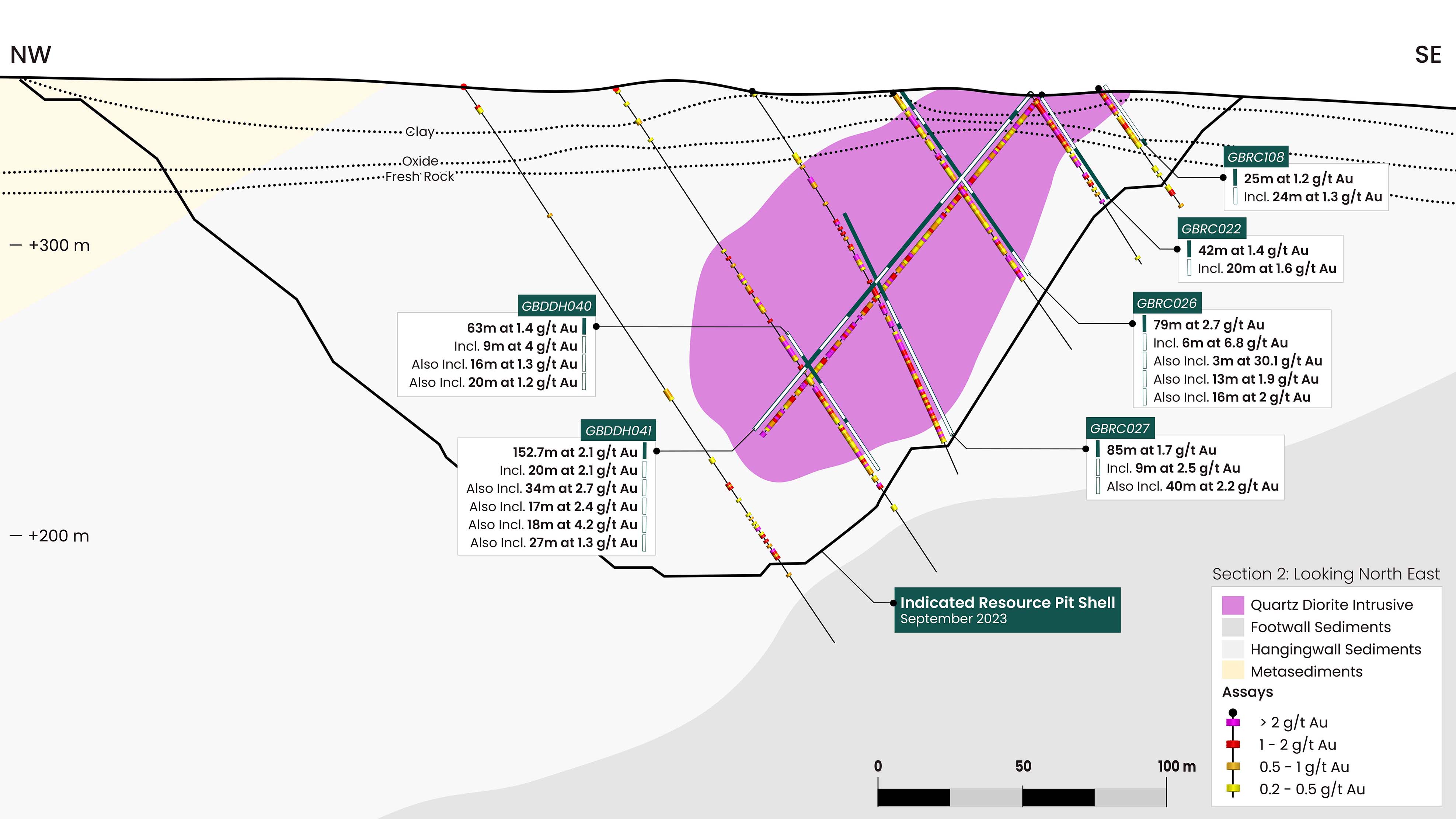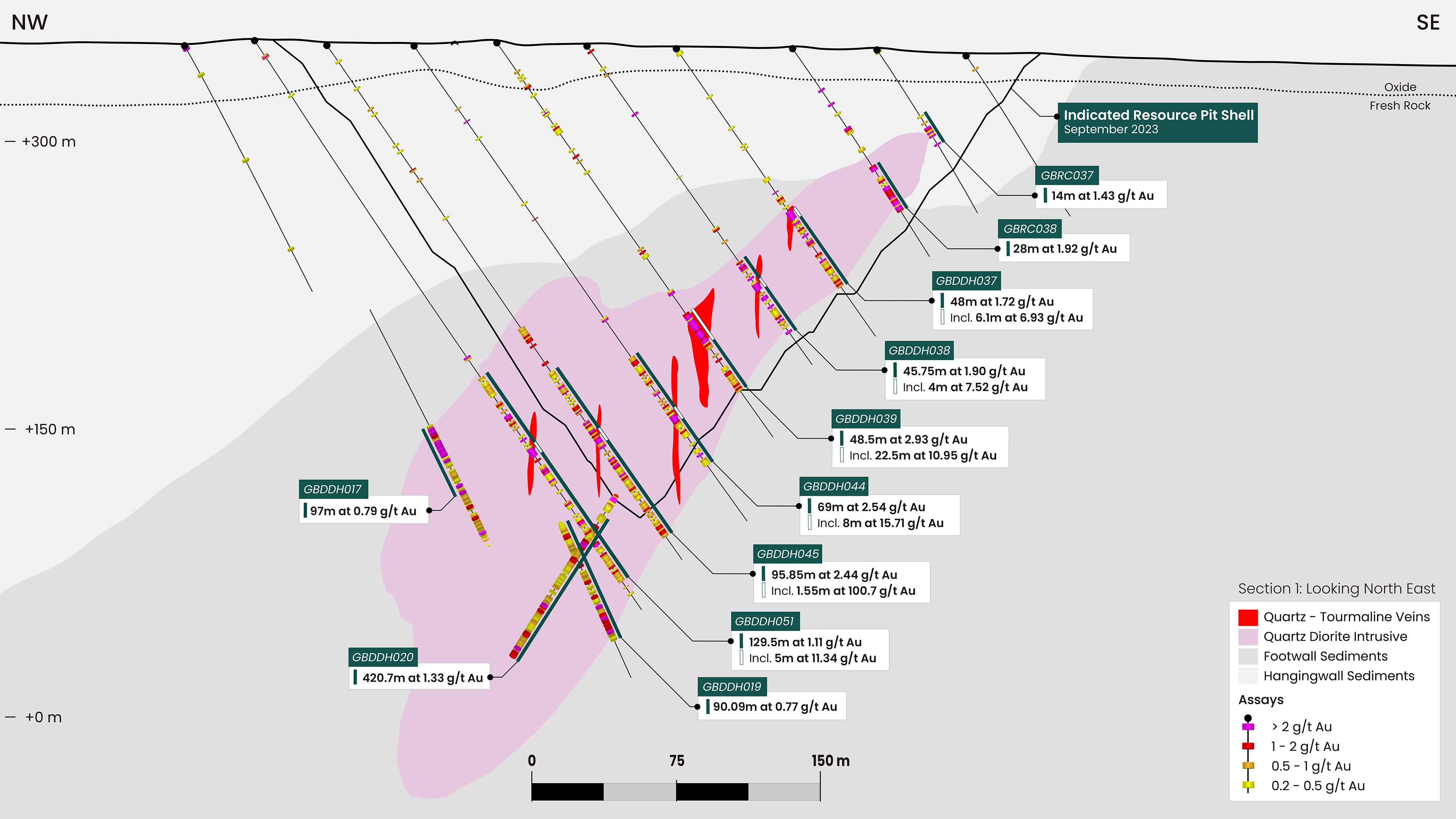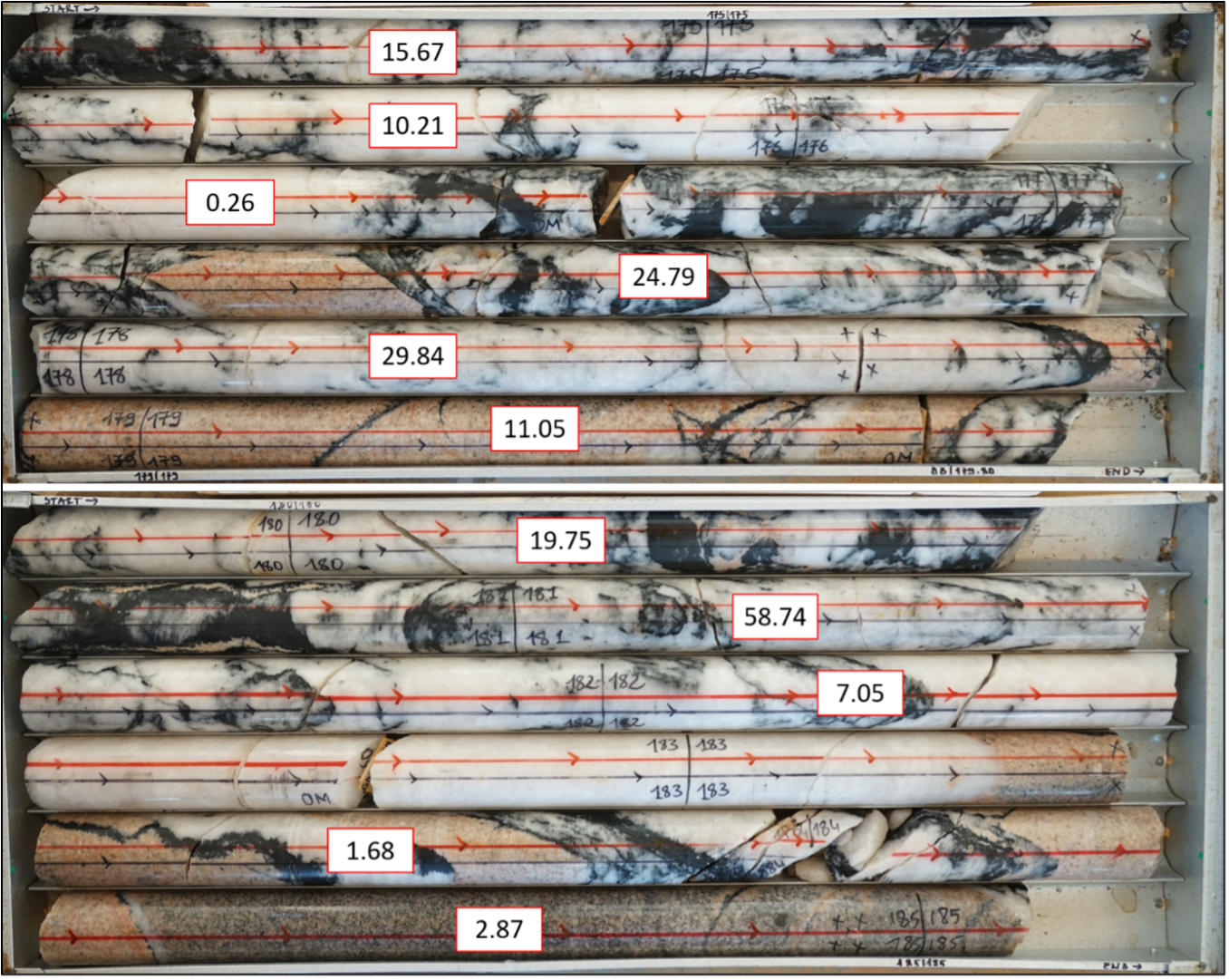Geology
Overview
The KGP consists of the Koné gold deposit and the Gbongogo gold deposit. The KGP is situated within the Birimian Baoule‐Mossi Domain of the West African Craton, and the permit scale geology consists of slices of structurally emplaced Birimian mafic volcanic rocks and Birimian sediments (conglomerates and sandstones). Metamorphic grade in the area is lower greenschist facies.
The Koné gold deposit is located on the Koné – Fonondara shear zone which hosts the Seguela gold mine (Fortuna Silver) to the South and the Fonondara, Cassere and Caribou advanced stage gold targets in the north (Barrick Gold).
Koné Gold Deposit
The mineralization at Koné is hosted within a 150-330m wide complex quartz diorite package which dips 45-50° west and strikes north-south, and is interpreted as a series of intrusions rather than a single coherent intrusion. The diorite package is intruded into folded mafic volcaniclastic country rocks.
The hanging wall contact of the diorite package with the overlying volcaniclastic package is well defined by current drilling and is marked by thin dykes of diorite and a 10-20m thick, barren diorite body.
In the footwall, mafic volcaniclastic rocks dominate the geology and are also intruded by thin, foliation parallel diorite dykes which have weak gold values associated with their contacts. Folds observed in the volcaniclastic rocks typically plunge between 10-40° towards the southwest.
Geologic Map of the Koné Gold Deposit
The diorites are coarse to fine-grained, grey in colour and composed of domains of plagioclase ± quartz and domains of mafic minerals – dominantly biotite. Grain size variations are common and coarse grained and fine-grained variations are captured by the core logging and often have sharp, measurable contacts which suggest the diorite is a polyphase composite intrusive with multiple pulses of diorite (of the same composition and appearance) intruding into each other. However, the coarse and fine components of the package can also have soft gradational contacts and grade into one another progressively.
Generalized Cross-Section of the Koné Gold Deposit
Mineralization at Koné is characterized by mineralized true widths of between 170 and 330m at average grades of between 0.5g/t and 1.2g/t.
The diorite intrusion is consistently mineralized with gold associated with 1-3% fine, disseminated pyrite with elevated gold grades related to an increase in the frequency of 1-5mm quartz + calcite + pyrite veinlets which are oriented north-south and dipping 45-50° west, consistent with the foliation.
Hydrothermal alteration is weak and dominated by biotite. Silicification is rare.
Photographs of core from the Koné Gold Deposit
The cross section below illustrates the resource shells from the the August 2021 MRE, the May 2021 PEA and the reserve shell from the February 2022 DFS Mineral Reserve. The section clearly demonstrates the remarkable continuity of mineralization across extreme widths, the natural dip of the deposit as well the presence of higher-grade portions within the resource. It is these attributes of the Koné deposit that position the KGP to be a low-cost, large scale open pit as demonstrated by the results of the February 2022 DFS.
Cross Section Showing Resource and Reserve Shells with Blocks
Gbongogo Main Deposit
The Gbongogo deposit is hosted within a quartz diorite intrusion located within the North South striking Gbongogo shear zone. On the western side of the shear zone the geology is characterised by fine grained metasedimentary rocks, and on the eastern side of the shear zone the geology is characterised by coarse grained siliciclastic sediments (conglomerates and sandstones). The boundary between the eastern and western domains is marked by a rhyolitic volcanic unit interpreted to be structurally emplaced, and Gbongogo quartz diorite is intruded into this rhyolite volcanic unit. The surrounding felsic volcanic rocks have deformed plastically and developed a strong foliation, while the quartz diorite has deformed in brittle manner, fracturing and creating the space for gold bearing quartz veins.
The quartz diorite is a cylindrical, cigar shaped intrusive plug that is 180 wide and 100m long. The intrusion is plunging to the North at approximately 50 degrees and has been drilled to a vertical depth of 320m. The intrusion is open at depth. Within the quartz diorite, gold is associated with a network of quartz-tourmaline veins with orthoclase/albite alteration halos. The veins have numerous orientations and carry very high grades in places (photo below).
The infill drilling program has provided significantly more structural information on these veins and there is now enough drill coverage to get an understanding of orientation and control. Of particular interest is the discovery of several larger veins which have returned some of the more spectacular intercepts at Gbongogo Main (see photo of GBDDH039 core). These vein systems, particularly the larger veins, offer the potential to further increase the grade profile at Gbongogo Main.
Intercepts from High-Grade Quartz-Tourmaline Vein Sets
Hole |
From (m) |
To (m) |
Length (m) |
Uncut Grade (Au g/t) |
Grade Cut to 20g/t (Au g/t) |
|---|---|---|---|---|---|
| GBRC013 | 61.00 | 77.00 | 16.00 | 10.00 | 6.16 |
| GBDDH004 | 85.40 | 95.20 | 9.80 | 10.77 | 8.38 |
| GBDDH007 | 61.20 | 78.10 | 16.90 | 10.60 | 5.00 |
| GBDDH035 | 168.00 | 172.00 | 4.00 | 17.59 | 12.16 |
| GBDDH039 | 172.50 | 195.00 | 20.50 | 10.95 | 8.34 |
| GBDDH043 | 197.00 | 214.00 | 17.00 | 8.56 | 5.35 |
| GBDDH044 | 233.00 | 241.00 | 8.00 | 15.71 | 5.57 |
| GBDDH045 | 238.50 | 255.00 | 16.50 | 10.69 | 3.10 |
| GBRC024 | 51.00 | 64.00 | 13.00 | 9.75 | 8.84 |
Cross Section of Gbongogo Main with High-Grade Quartz Tourmaline Intercepts Highlighted
High Grade quartz tourmaline veins in GBDDH039 with gold grade in g/t (1m samples)
